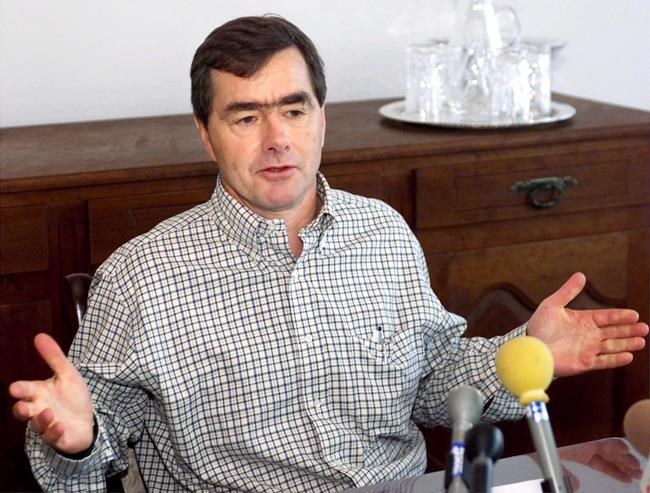ST. JOHN'S, N.L. — The Newfoundland and Labrador government has asked the company vying to build one of the country's first large-scale green hydrogen plants to provide more information about the project's effects on the environment.
World Energy GH2 must include more details in its environmental assessment of the massive development, called Project Nujio’qonik, the Department of Environment and Climate Change said Wednesday.
The department said in an email that requiring additional information is a routine part of the environmental assessment process, "particularly as a project becomes more defined."
World Energy GH2 is hoping to erect two wind farms, each of up to 164 wind turbines, on western Newfoundland's Port au Port Peninsula and in the nearby Codroy Valley area, as well as a hydrogen and ammonia production plant in the neighbouring town of Stephenville.
The company is led by Clearwater Seafoods co-founder John Risley and Brendan Paddick, a former chair of Nalcor Energy, the province's now-defunct Crown energy corporation. Their ambitions in the province have sparked protests in western Newfoundland, where some residents say they're concerned about Project Nujio’qonik's footprint in an area home to a delicate ecosystem.
In a letter to World Energy GH2 chief executive officer Sean Leet, Environment Minister Bernard Davis said the company's environmental impact statement is "deficient."
The letter dated Oct. 31 and posted to the provincial government's website asks for more information about the project's water use and its emergency response and contingency plans. It also asks for an "assessment of potential environmental and cumulative effects."
The amended assessment will then go through a 50-day period of public consultation, the letter said. Davis writes that he will deliver a verdict on the project within 70 days of receiving the new documents.
In a statement Wednesday, World Energy GH2 said it was hoping to be released from further environmental assessments with conditions.
"This amendment process is not unusual for a project of this scale," the emailed statement said. "We will work with government to comply with the amendment requirements."
The federal government said in late September that the project would not be subject to its impact assessment process.
The green hydrogen that GH2 is promoting uses renewable power like wind to split hydrogen from water molecules by electrolysis. Green hydrogen has no emissions, but it costs more to make than hydrogen produced from fossil fuels.
Hydrogen is mainly used to help in oil refineries and to make fertilizer, iron and steel, and methanol, an alcohol used in some paints and plastics and construction materials. In the low-carbon economy transition, hydrogen can play a bigger role as a source of energy to power cars, heavy vehicles, planes and cargo ships, and to replace coal and natural gas as a source of electricity.
This report by The Canadian Press was first published Nov. 1, 2023.
The Canadian Press




